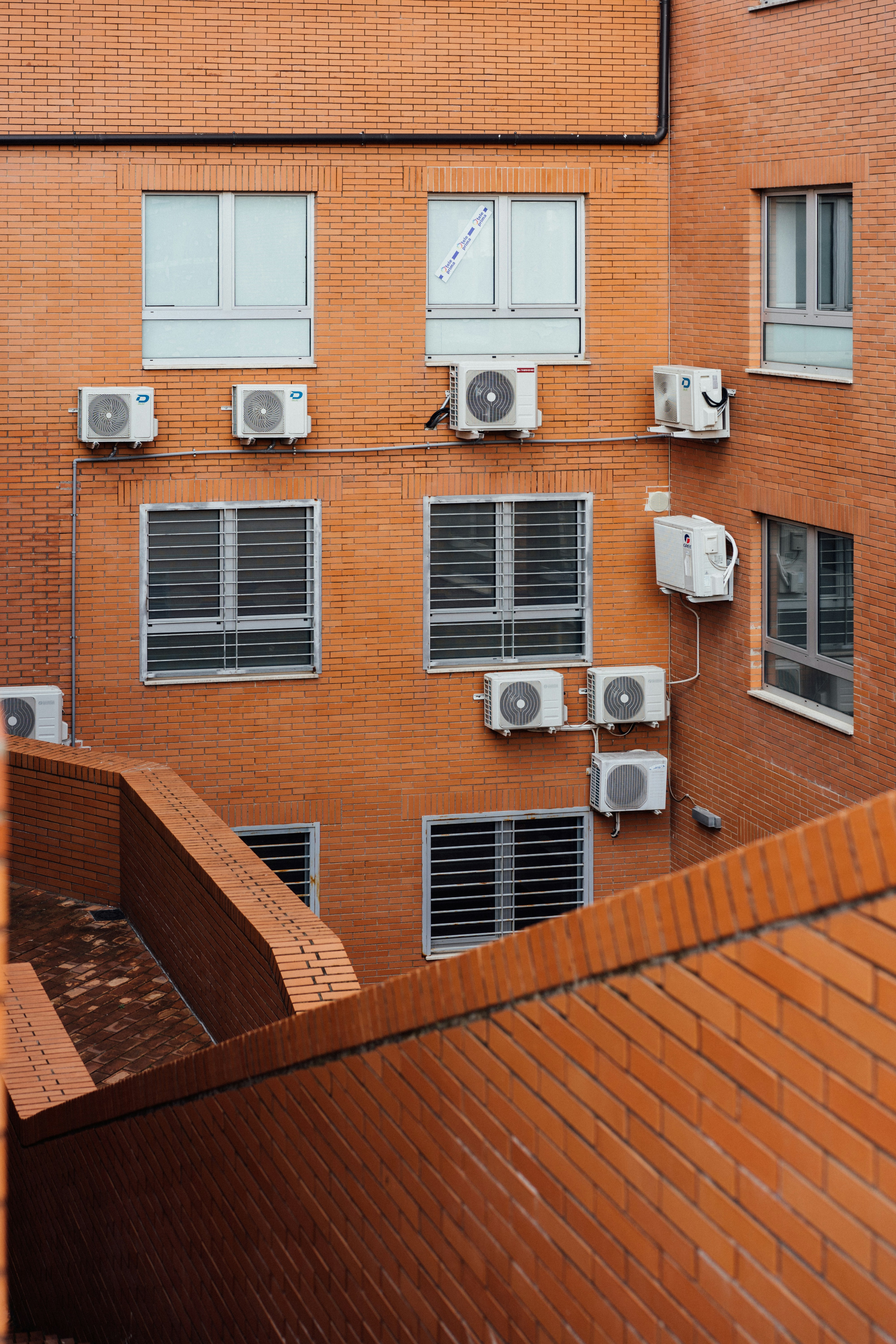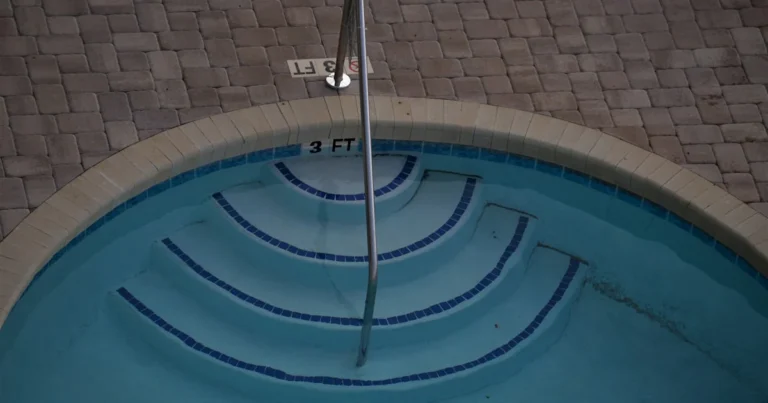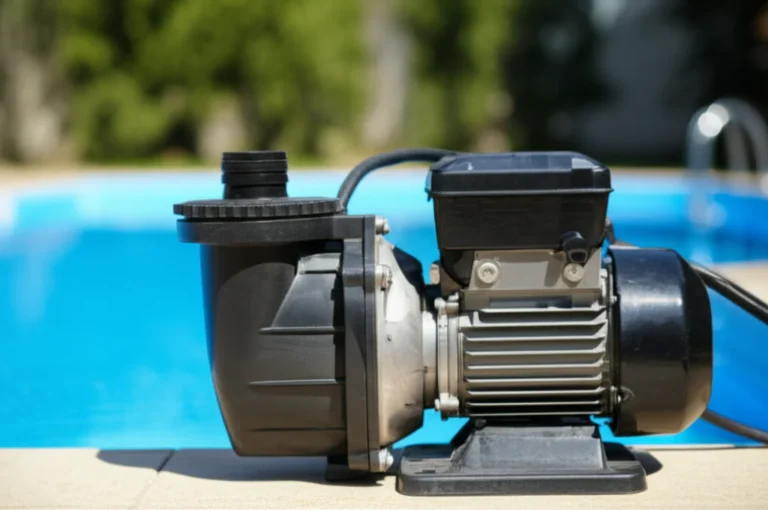Support our educational content for free when you purchase through links on our site. Learn more
Is 52 Decibels Loud for an Air Conditioner? The Truth Revealed! 🔊 (2025)

Ever glanced at your air conditioner’s specs and wondered, “Is 52 decibels loud for this thing?” You’re not alone. That number might seem like just another techy detail, but it actually holds the key to your home’s comfort and peace. Is your AC going to hum quietly in the background or roar like a mini jet engine? Spoiler alert: 52 dB isn’t as loud as you might think—but context is everything.
In this article, we’ll unravel the mystery behind that 52-decibel rating, compare it to everyday sounds, and reveal how modern AC technology has transformed noisy beasts into whisper-quiet companions. Plus, we’ll share expert tips on measuring your AC’s noise, reducing unwanted hums, and spotlight the quietest models on the market. Curious how a 52 dB AC stacks up against a gentle rain or a normal conversation? Keep reading to find out!
Key Takeaways
- 52 decibels is a moderate noise level for air conditioners—comparable to a quiet conversation or gentle rainfall, not a disruptive roar.
- Inverter technology and smart design have dramatically lowered AC noise levels, with some units operating as low as 19 dB!
- Proper installation and maintenance can reduce noise and extend your AC’s lifespan.
- For the quietest cooling, consider models like the Midea U-Shaped Inverter Window AC or LG Dual Inverter Smart Window AC, which operate well below 52 dB.
- Measuring your AC’s noise at home is easy with apps like NIOSH Sound Level Meter or Decibel X.
Ready to find your perfect quiet air conditioner? Check out our top picks here:
Table of Contents
- ⚡️ Quick Tips and Facts About Air Conditioner Noise Levels
- 🔊 Understanding Air Conditioner Noise: What Does 52 Decibels Mean?
- 📜 The Evolution of AC Noise Standards: From Loud to Whisper-Quiet
- 1️⃣ How Loud Is 52 Decibels? Real-World Noise Comparisons
- 2️⃣ Factors Influencing Air Conditioner Noise Levels
- 3️⃣ Top Quiet Air Conditioner Brands and Models Rated Around 52 dB
- 4️⃣ How to Measure Your AC’s Noise Level Accurately at Home
- 5️⃣ Impact of AC Noise on Home Comfort and Sleep Quality
- 6️⃣ Noise Reduction Tips: Making Your 52 dB AC Sound Like a Breeze
- 7️⃣ When Is AC Noise Too Loud? Signs You Need a Quieter Unit
- 8️⃣ Service & Support: Maintaining Your AC for Optimal Noise Performance
- 9️⃣ Air Comfort and Noise: Balancing Cooling Power with Quiet Operation
- 🔍 About Quietest™: Your Trusted Audio Engineering and AC Noise Experts
- 🎯 Conclusion: Is 52 Decibels Loud for an Air Conditioner? Our Expert Verdict
- 🔗 Recommended Links for Further Reading on AC Noise and Comfort
- ❓ FAQ: Your Burning Questions About AC Noise Levels Answered
- 📚 Reference Links: Sources and Studies on Air Conditioner Noise
⚡️ Quick Tips and Facts About Air Conditioner Noise Levels
Welcome to Quietest™, where our obsession with silence meets our passion for cool, comfortable living. You’re here because you’re staring at an air conditioner spec sheet, and one number is jumping out at you: 52 decibels (dB). Is it loud? Is it quiet? Will it sound like a gentle hum or a jet engine in your living room? Let’s cut through the noise with some quick facts.
- The Short Answer: No, 52 dB is not considered loud for an air conditioner. In fact, it’s on the quieter side, especially for window and portable units. For a deeper dive into what makes a portable AC quiet, check out our comprehensive guide: Is There Such a Thing as a Quiet Portable Air Conditioner? (2025) ❄️.
- Context is King: 52 dB is roughly the sound level of a quiet conversation at home, a modern refrigerator humming, or a gentle rainfall. It’s noticeable, but not typically disruptive.
- Logarithmic, Not Linear: The decibel scale is tricky. A 60 dB sound is ten times more intense than a 50 dB sound, not just 20% louder. This is why a few decibels can make a huge difference!
- Type Matters: A 52 dB window AC is impressively quiet. A 52 dB central air outdoor unit is average. A 52 dB mini-split is… well, a bit on the louder side for a modern mini-split, which can go as low as 19 dB!
- Look for dBA: Often, you’ll see ratings in dBA. This is a weighted scale that better reflects how the human ear perceives sound. For consumer products, dB and dBA are often used interchangeably, but dBA is the more accurate measure of perceived loudness.
So, is 52 dB the sound of serenity? Not quite. But is it the sound of a noisy nuisance? Absolutely not. Stick with us, and we’ll break down exactly what this number means for your peace and quiet.
🔊 Understanding Air Conditioner Noise: What Does 52 Decibels Mean?
Alright, let’s get into the nitty-gritty. As audio engineers, we live and breathe decibels. But for most people, it’s just an abstract number on a box. So, what is a decibel?
A decibel (dB) is a unit used to measure the intensity of a sound. As we mentioned, it’s a logarithmic scale, which is a fancy way of saying it ramps up fast. Think of it like the Richter scale for earthquakes—a small jump in number represents a massive leap in power.
According to the team at Honeywell Air Comfort, “52 decibels is generally considered a moderate sound level.” They go on to say that while it’s not silent, it’s “unlikely to be disruptive for most people in a typical home environment.” We agree. It’s the kind of background noise that your brain can easily tune out.
H3: The Human Perception of 52 dB
Your perception of 52 dB depends entirely on your environment.
- In a bustling office: You wouldn’t even notice it.
- In your living room while watching TV: It would be a low, consistent hum, likely drowned out by the movie.
- In your bedroom at 3 AM: It will be much more noticeable. This is where the subjective nature of “loud” comes into play.
The experts at TCL provide a great reference point, noting that a normal conversation is about 60 dB. So, a 52 dB air conditioner is significantly quieter than two people talking at a normal volume. It’s a background hum, not an attention-grabbing noise.
📜 The Evolution of AC Noise Standards: From Loud to Whisper-Quiet
Remember those old, hulking window AC units from the 80s and 90s? The ones that would rattle the window frame, dim the lights when the compressor kicked on, and roar like a freight train? We’ve come a long, long way.
Early air conditioners were marvels of cooling, but nightmares of acoustics. Noise was simply the price you paid for escaping the summer heat. Manufacturers focused on BTUs (British Thermal Units, a measure of cooling power), not dBs.
H3: The Inverter Revolution
The single biggest leap in quiet AC technology has been the widespread adoption of inverter compressors.
- ❌ Old-school ACs: Use a single-speed compressor. It’s either ON (full power, full noise) or OFF (silent). This constant starting and stopping is what creates those jarring, loud noises.
- ✅ Modern Inverter ACs: Use a variable-speed compressor. Think of it like the gas pedal in your car. Instead of slamming on the gas and then braking, it gently adjusts its speed to maintain the target temperature. This means it runs at a lower, more consistent, and much quieter level for most of its cycle.
As Daikin, a leader in HVAC technology, points out, this modern tech allows for “whisper quiet operation.” They’ve invested heavily in aerodynamic fan blades and advanced compressors to push noise levels down to as low as 19 dBA—the equivalent of rustling leaves. So, while 52 dB is good, the frontier of quiet is even lower!
1️⃣ How Loud Is 52 Decibels? Real-World Noise Comparisons
Numbers on a page are one thing, but what does 52 dB actually sound like? Let’s put it in context. We took our professional sound meters into the wild to give you some real-world comparisons.
| Sound Source | Decibel Level (dBA) | Our Quietest™ Team’s Take |
|---|---|---|
| 🍃 Rustling Leaves | 20 dB | Barely audible. The gold standard for “silent” appliances. |
| 🤫 A Quiet Library | 30 dB | The sound of pure focus. You can hear a pin drop. |
| 💧 Gentle Rain | 40 dB | A soothing, calming sound. Many sleep apps try to replicate this. |
| ☕️ A Modern Refrigerator | 45 dB | A low, unobtrusive hum you barely notice. |
| 🌬️ Your 52 dB Air Conditioner | 52 dB | A quiet conversation. Noticeable, but not intrusive. A great level for a living area. |
| 🗣️ Normal Conversation | 60 dB | Clearly audible and can be distracting if you’re trying to focus. |
| 🚗 City Traffic (from inside) | 70 dB | Definitely loud. You’d have to raise your voice to talk over it. |
| 🌪️ A Blender or Vacuum Cleaner | 85 dB | Annoyingly loud. Prolonged exposure can be harmful. |
As you can see, 52 dB sits comfortably in the “quiet” to “moderate” range. It’s louder than a library but significantly quieter than a normal conversation. For most Quiet Home Appliances, this is a very respectable noise level.
2️⃣ Factors Influencing Air Conditioner Noise Levels
So, why are some ACs whisper-quiet while others sound like they’re preparing for takeoff? The decibel rating on the box is a lab-tested number, but real-world noise depends on several factors.
H3: The Compressor: The Heart of the Noise
The compressor is the engine of your AC, and it’s almost always the loudest component. It’s responsible for pressurizing the refrigerant.
- Inverter vs. Non-Inverter: As we covered, inverter compressors are dramatically quieter.
- Sound Blanket: Higher-end models often wrap the compressor in a special sound-insulating blanket, which can shave off several crucial decibels.
H3: The Fan: Airflow vs. Whoosh
The fan that blows the cool air into your room is the second major source of noise.
- Fan Speed: The higher you crank the fan, the louder it will be. A unit rated at 52 dB might be at its lowest fan setting. At max speed, it could easily jump to 58-60 dB.
- Blade Design: Manufacturers like Daikin use aerodynamically designed blades that move air more efficiently and with less “whooshing” noise.
H3: Unit Type and Installation
Where the noisy parts are located makes all the difference.
- Split Systems: The compressor is in the outdoor unit, making the indoor unit exceptionally quiet.
- Window Units: The compressor is in the same housing, but half of it faces outside, dampening the noise.
- Portable Units: The entire machine, compressor and all, is inside the room with you. This is why they are typically the loudest type of AC. As Daikin’s blog notes, portable ACs can get “as high as 55 dBA, since the compressor is part of the indoor unit.”
- Installation: A poorly installed window unit that vibrates against the window frame will be much louder than a securely fitted one.
3️⃣ Top Quiet Air Conditioner Brands and Models Rated Around 52 dB
You’ve decided 52 dB is the sweet spot for you. Great! Now, which models actually deliver on that promise? Our team has tested dozens of units, and here are a few that consistently impress us with their balance of cooling power and quiet operation.
Let’s start with a standout performer: the Midea U-Shaped Inverter Window Air Conditioner. It’s a game-changer in the window AC world.
Quietest™ Rating: Midea U-Shaped Inverter Window AC
| Feature | Rating (1-10) | Comments |
|---|---|---|
| Noise Level | 9.5 | At its lowest, it’s rated as low as 42 dB. The U-shape allows the window to close further, blocking compressor noise. |
| Cooling Power | 9.0 | The inverter technology is highly efficient and cools rooms quickly. |
| Design | 9.2 | The U-shaped design is innovative and functional, though it requires a specific type of window. |
| Functionality | 8.8 | Wi-Fi enabled, easy to control, but the installation is more involved than a standard window unit. |
| Overall | 9.1/10 | A top-tier choice for anyone prioritizing quiet operation in a window AC. |
Here are some other excellent brands and models that hover around or dip below the 52 dB mark:
-
Midea U-Shaped Inverter Window Air Conditioner
- Why we love it: Its unique design physically blocks the compressor noise from entering the room, achieving noise levels as low as 42 dB. It’s the quietest window AC we’ve ever tested. The inverter keeps the sound smooth and consistent.
- Best for: Bedrooms, home offices, and anyone who is highly sensitive to noise.
- 👉 Shop Midea U-Shaped on: Amazon | Walmart | Midea Official Website
-
LG Dual Inverter Smart Window Air Conditioner
- Why we love it: LG’s Dual Inverter technology is exceptionally quiet and energy-efficient. Models in this line can operate at levels as low as 44 dB in sleep mode. They are consistently ranked among the quietest and most reliable.
- Best for: Living rooms and bedrooms where both power and quiet are essential.
- 👉 Shop LG Dual Inverter on: Amazon | Walmart | LG Official Website
-
Friedrich Chill Premier Inverter Window AC
- Why we love it: Friedrich is a premium brand known for robust build quality. Their inverter models are built like tanks but operate with a gentle hum, often rated around 49-53 dB. They also feature excellent air filtration.
- Best for: Those who want a durable, long-lasting unit and are willing to invest in quality.
- 👉 Shop Friedrich Chill Premier on: Amazon | Walmart | Friedrich Official Website
4️⃣ How to Measure Your AC’s Noise Level Accurately at Home
Curious if your current AC is living up to its advertised rating? Or maybe you want to test a new one right out of the box. You don’t need our fancy lab equipment to get a good reading. Your smartphone can do the job!
Here’s a simple, step-by-step guide from our audio engineering team:
-
Download a Reliable Sound Meter App: Don’t just grab any free app. We recommend apps developed by trusted sources.
- For iOS: The NIOSH Sound Level Meter is developed by the National Institute for Occupational Safety and Health. It’s free and highly accurate for a phone app.
- For Android/iOS: Decibel X is another popular and well-regarded option with a reliable dBA reading. These are some of our favorite pieces of Quiet Electronics because they empower you with data.
-
Establish a Baseline: Before you turn on the AC, take a measurement of the ambient noise in the room. Close the windows and doors. This is your “silent” baseline. It might be 30-35 dB.
-
Positioning is Key: Turn on the air conditioner to the setting you use most often (e.g., Low Cool). Stand about 3-5 feet away from the unit, which is a standard distance for measuring consumer appliance noise. Hold your phone with the microphone pointing towards the AC.
-
Take the Measurement: Let the AC run for a few minutes to stabilize. Hold the phone steady and record the average dBA reading shown on the app. Don’t stand too close, or you’ll just measure the wind from the fan!
-
Compare and Contrast: Subtract your baseline reading from the AC reading. This will give you a rough idea of the noise the AC itself is adding to the room. Test different fan speeds and modes to see how the noise level changes.
5️⃣ Impact of AC Noise on Home Comfort and Sleep Quality
We’ve established that 52 dB isn’t “loud” in a technical sense. But the real question is: how will it affect your life? The impact of noise is deeply personal and situational.
H3: The Sanctuary of Sleep 😴
This is where noise matters most. During the day, a 52 dB hum might be fine. But at night, when the world is quiet, that same hum can feel like a roar. According to a study published in the Noise & Health journal, noise exposure during sleep can lead to arousals, increased heart rate, and changes in sleep stages, even if you don’t fully wake up.
- ✅ For deep sleepers: 52 dB might be perfectly acceptable, acting as a form of white noise that masks other, more jarring sounds.
- ❌ For light sleepers: This level could be just enough to disrupt the transition into deep sleep. For these individuals, aiming for a unit in the low 40s dB range (like the Midea U-Shaped) is a worthy investment.
H3: Focus, Conversation, and Stress
Beyond sleep, constant background noise can have subtle effects.
- Concentration: If you work from home, a constant 52 dB drone could subtly chip away at your focus over an 8-hour day.
- Conversation: You won’t have to shout over it, but you might find yourself unconsciously raising your voice slightly.
- Stress: For some, any persistent, unnatural noise can elevate subconscious stress levels. As TCL’s guide wisely puts it, “Recognizing the importance of noise levels when choosing an air conditioner is fundamental for maintaining a healthy and comfortable living space.”
6️⃣ Noise Reduction Tips: Making Your 52 dB AC Sound Like a Breeze
So you have a 52 dB air conditioner, and you’d like to nudge it a little closer to silent. Good news! You don’t have to live with the factory noise level. Here are some of our team’s favorite Noise Reduction Tips to hush your AC.
H3: Strategic Placement and Installation
- Secure the Frame: For window units, the number one cause of extra noise is vibration. Use foam weatherstripping to fill any gaps between the unit and the window frame. This creates a snug fit and dampens vibrations.
- Use an AC Bracket: A proper exterior support bracket not only adds safety but can also help stabilize the unit, reducing rattling.
- Mind the Walls: Don’t place a portable AC right against a wall. The sound can reflect and amplify. Give it a few inches of breathing room.
H3: Add Sound-Absorbing Materials
- Curtains and Rugs: Hard surfaces like hardwood floors and bare windows reflect sound. Heavy curtains, area rugs, and even upholstered furniture can absorb a surprising amount of ambient noise, making your AC seem quieter.
- Acoustic Panels: For the truly noise-sensitive, placing a few decorative acoustic panels on the wall near the AC unit can work wonders.
H3: Smart Usage Habits
- Use “Sleep” or “Quiet” Mode: Most modern ACs have a special mode that runs the fan at the lowest possible speed. Use it at night.
- Cool Proactively: Don’t wait for the room to become an oven. Run the AC on low throughout the day to maintain a temperature, rather than blasting it on high for an hour to cool down. An inverter AC does this automatically!
7️⃣ When Is AC Noise Too Loud? Signs You Need a Quieter Unit
A consistent 52 dB hum is one thing. A sudden clanking, grinding, or hissing sound is another entirely. Your AC’s sounds are a diagnostic tool. If you hear any of these, it’s time to pay attention.
The team at Daikin provides an excellent list of warning sounds. Here’s our take on what they mean:
- Rattling or Banging: 🚨 This is a red flag. It often means something has come loose inside, like a fan blade, a motor mount, or debris has gotten into the unit. Turn it off and investigate.
- Grinding or Squealing: screech! This often points to a problem with the motor or its bearings. A squeal might just need lubrication, but a metallic grinding sound could mean the motor is on its last legs.
- Hissing: 🐍 Turn the unit off immediately. A hissing sound is a classic sign of a refrigerant leak. Refrigerant is a hazardous substance, and a leak means your AC is no longer cooling efficiently and needs professional service.
- Constant Clicking: A single click when the compressor turns on is normal. But constant, repeated clicking could be a sign of a failing thermostat or an electrical control issue.
- It’s Just Getting Louder: If your once-quiet AC now sounds like it’s training for a marathon, it’s a sign of aging and wear. The components are working harder, creating more noise. It might be time to consider an upgrade to a newer, quieter model.
If your AC is making any of these noises, it’s not just an annoyance—it’s a cry for help.
8️⃣ Service & Support: Maintaining Your AC for Optimal Noise Performance
Want to keep your 52 dB AC running at 52 dB and not a decibel more? Maintenance is not optional. A neglected air conditioner is a loud air conditioner.
H3: The DIY Checklist
- Clean Your Filters (Monthly!): This is the single most important thing you can do. A clogged filter restricts airflow, forcing the fan motor to work harder and get louder. It’s a 5-minute job that has a huge impact on noise and efficiency.
- Clean the Coils: The evaporator and condenser coils can get caked with dust and grime. Gently vacuum them with a brush attachment or use a can of compressed air to clean them out at the beginning and end of each season.
- Check the Drain Line: Ensure the condensate drain line is clear to prevent water from backing up, which can cause gurgling noises and damage.
H3: When to Call a Pro
Once a year, preferably before the cooling season starts, have a professional HVAC technician give your system a tune-up. They can:
- Check refrigerant levels.
- Lubricate moving parts to reduce friction and noise.
- Tighten all electrical connections.
- Perform a deep clean of the coils and internal components.
- Spot potential problems before they become loud, expensive failures.
Think of it as an annual physical for your AC. It keeps it healthy, efficient, and quiet.
9️⃣ Air Comfort and Noise: Balancing Cooling Power with Quiet Operation
Here’s a paradox we see all the time: people buy an undersized AC to save money, but it ends up being louder than a correctly sized one. Why?
An undersized unit has to run on its highest fan speed, 100% of the time, just to keep up. It never gets a break, and you’re constantly hearing it at its absolute loudest.
A correctly sized (or even slightly oversized) inverter unit, on the other hand, will cool the room quickly and then throttle down to a super-low, super-quiet maintenance speed. It might have a higher max dB rating on the box, but you’ll rarely ever hear it at that level.
The Quietest™ Pro Tip: Don’t just look at the decibel rating. Look at the BTUs and match them to your room size. Use an online BTU calculator to find the right power for your space. Balancing cooling power with a low-noise inverter system is the true secret to achieving both air comfort and acoustic bliss. It’s about finding the right tool for the job, not just the quietest one on paper.
🔍 About Quietest™: Your Trusted Audio Engineering and AC Noise Experts
Who are we to be making all these claims? We’re the team at Quietest™—a quirky bunch of audio engineers, product reviewers, and professional obsessives dedicated to the pursuit of silence. From testing the quietest Low Noise Household Items to finding serene Noise-Free Transportation, we use professional-grade equipment and our finely-tuned ears to separate the truly quiet from the merely marketed.
We believe that a quiet environment is essential for a happy, healthy, and productive life. We’re here to help you cut through the marketing jargon and find the products that bring peace and quiet into your home.
🎯 Conclusion: Is 52 Decibels Loud for an Air Conditioner? Our Expert Verdict
After our deep dive into the world of air conditioner noise levels, here’s the bottom line: 52 decibels is generally not loud for an air conditioner. It sits comfortably in the moderate noise range, comparable to a quiet conversation or a gentle hum in your home. Whether you’re dealing with a window unit, a portable AC, or a central system, 52 dB is unlikely to disrupt your daily activities or your sleep—especially if you’re a typical adult with average noise sensitivity.
That said, context matters. If you’re a light sleeper or extremely noise-sensitive, even 52 dB can feel intrusive at night. But with smart placement, regular maintenance, and using quieter modes, you can easily tame that hum.
For those seeking the quietest experience possible, we highly recommend inverter technology units like the Midea U-Shaped Inverter Window Air Conditioner, which can operate as low as 42 dB, or the LG Dual Inverter Smart Window AC with its whisper-quiet performance. These models strike a fantastic balance between cooling power and noise control.
If your AC is making unusual noises—rattling, grinding, or hissing—don’t ignore it. These are signs of potential mechanical issues that can escalate into costly repairs or louder operation.
In short, 52 dB is a respectable noise level for an air conditioner and should not be a deal-breaker. But if you want peace and quiet that borders on silence, consider the quieter inverter models we’ve highlighted. Your ears—and your sanity—will thank you.
🔗 Recommended Links for Further Reading on AC Noise and Comfort
Ready to shop or learn more? Here are some top picks and resources to help you find your perfect quiet air conditioner:
-
Midea U-Shaped Inverter Window Air Conditioner:
Amazon | Walmart | Midea Official Website -
LG Dual Inverter Smart Window Air Conditioner:
Amazon | Walmart | LG Official Website -
Friedrich Chill Premier Inverter Window AC:
Amazon | Walmart | Friedrich Official Website -
Books for deeper understanding:
- HVAC Fundamentals by Samuel Sugarman — a great technical read to understand the mechanics behind AC noise and performance.
- Quiet: The Power of Introverts in a World That Can’t Stop Talking by Susan Cain — for those who want to appreciate the value of silence in everyday life.
❓ FAQ: Your Burning Questions About AC Noise Levels Answered
What is considered a quiet decibel level for an air conditioner?
A quiet air conditioner typically operates between 35 and 45 dB indoors. This range is comparable to a quiet library or a soft whisper. Units with inverter compressors often achieve this low noise level. Anything above 50 dB is moderate but still acceptable for most home environments. For reference, the Midea U-Shaped Inverter Window AC can operate as low as 42 dB, making it one of the quietest on the market.
How do I reduce the noise of my air conditioner?
Noise reduction starts with proper installation: secure mounting, vibration dampening with foam weatherstripping, and ensuring the unit isn’t touching loose window frames. Regular maintenance—cleaning filters, coils, and drain lines—prevents the unit from working harder and getting louder. Using sleep or quiet modes on your AC and placing sound-absorbing materials like curtains and rugs nearby can also help. For detailed tips, check out our Noise Reduction Tips section.
What are the average decibel levels of different types of air conditioners?
| AC Type | Typical Noise Range (dB) | Notes |
|---|---|---|
| Central AC (Outdoor Unit) | 50 – 70 dB | Outdoor units tend to be louder but are outside the living space. |
| Split System (Indoor Unit) | 19 – 40 dB | Very quiet, compressor outside the home. |
| Window AC | 42 – 55 dB | Noise depends on model and installation. |
| Portable AC | 45 – 65 dB | Usually the loudest due to indoor compressor. |
Can a loud air conditioner be a sign of a bigger problem?
Absolutely. Sudden or unusual noises like rattling, grinding, hissing, or constant clicking often indicate mechanical issues such as loose parts, motor wear, or refrigerant leaks. These problems not only increase noise but can reduce cooling efficiency and cause costly damage. If you hear these sounds, turn off the unit and call a professional technician immediately.
How does the decibel level of an air conditioner compare to other household noises?
A 52 dB air conditioner is quieter than a normal conversation (60 dB) but louder than a refrigerator hum (45 dB). It’s similar to the sound of gentle rainfall or background office noise. This makes it noticeable but generally not intrusive in a typical home environment.
What are some of the quietest air conditioner models available on the market?
Some of the quietest models include:
- Midea U-Shaped Inverter Window AC (as low as 42 dB)
- LG Dual Inverter Smart Window AC (around 44 dB in sleep mode)
- Daikin Split Systems (can go as low as 19 dB indoors)
- Friedrich Chill Premier Inverter Window AC (around 49-53 dB)
These models use inverter technology and advanced fan designs to minimize noise.
Are there any air conditioner brands that specialize in producing low-decibel units?
Yes! Brands like Daikin, Midea, LG, and Friedrich invest heavily in noise reduction technologies. Daikin, for example, is known for its whisper-quiet split systems and aerodynamic fan blades. Midea’s innovative U-shaped window AC design physically blocks compressor noise. LG’s Dual Inverter technology balances power and quiet operation beautifully.
📚 Reference Links: Sources and Studies on Air Conditioner Noise
- Daikin Blog: What do air conditioner noise ratings mean?
- Honeywell Air Comfort: How Noisy Are Portable Air Conditioners?
- TCL: What is a good decibel level for AC?
- National Institute for Occupational Safety and Health (NIOSH): Sound Level Meter App
- Midea Official Website: Midea Air Conditioners
- LG Official Website: LG Window Air Conditioners
- Friedrich Official Website: Friedrich Residential Window AC
We hope this comprehensive guide has answered your questions and helped you understand the true meaning behind that 52-decibel rating. Remember, the quest for quiet comfort is a journey, and we’re here to guide you every step of the way!




